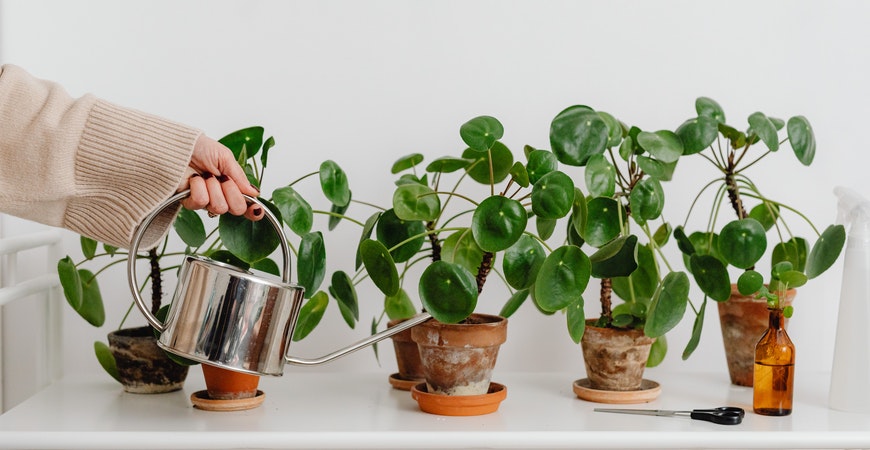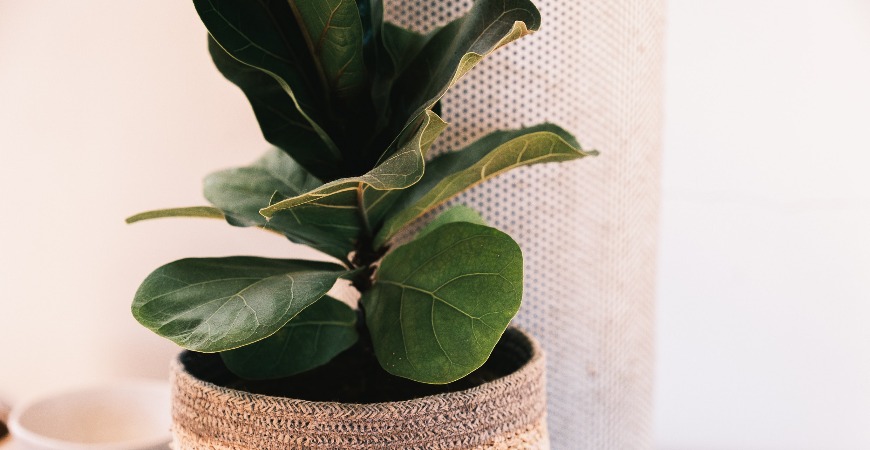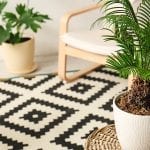
How to Increase Humidity for Your Houseplants
Humidity can be an odd mistress, and finding the right balance for your house plants isn’t always easy. Sure, you can plug in humidifiers and dehumidifiers into every outlet in your house and let them battle it out, but the only victor will be your utility company. Instead, it’s better to understand the signs of whether your houseplants need more humidity, what indoor plants are best suited for your home’s environment, and how to find the right tools that keep your home’s humidity at the ideal levels.
What are the signs that your indoor plants need more humidity?
While plants lack the capacity for language, they’ll tell you a lot if you’re willing to listen. However, it’s easy to confuse the signs and misdiagnose what’s affecting your plant. After all, a lack of humidity is a lack of moisture, and many things can cause this. So, if a plant isn’t thriving, the issue may not be a low humidity level. Instead, the underlying problem could be underwatering or overexposure to the sun.
The best way to correctly diagnose the issue is to understand the nuance in how a plant communicates. For example, discoloration of the leaves points to a need for more moisture, and where that discoloration occurs will tell you how to fix the issue.
If the leaves turn brown or yellow at the tip, it is likely a humidity issue. On the other hand, if the leaves turn colors along their edges, the plant probably needs more watering.
Additionally, if you notice that the leaves are dry and crumbling, a lack of moisture in the air could be the cause. A final signal to keep an eye out for is if the plan begins to wilt or droop.
How can you increase the humidity for your house plants?
If you’ve determined that your home’s arid climate is the cause of your plant’s general malaise, then it’s time to find ways to boost the humidity in your home. You may have some luck simply moving your greenery to or near areas with a higher humidity level, such as your bathroom or your kitchen, but that’s not a practical solution for everyone.
Humidifiers
Perhaps the most obvious way to improve the humidity in your home is with a humidifier. A humidifier, well, humidifies and adds moisture to the air in a room. This can benefit your greenery and also help members of your household who are dealing with the effects of a dry winter. The one potential downside here is that humidifiers require frequent cleaning to protect against bacterial growth, and if you’re not willing to commit to regular cleanings, you can do more harm than good.
Plant Misters
Another way to help your flowers, ferns, and other indoor plants is with a mister. Misters disperse water gently, unlike the direct flow of some spray bottles. However, you should avoid misting plants with hairy or velvety leaves. The mist could damage and even kill these species.
Additionally, misters are only a short-term solution. They only elevate humidity levels for a few minutes, at best. If you have a large array of houseplants or are experiencing season-long issues, you may want to try other methods.
Group Your Houseplants
Plants create their own humidity. That’s why jungles and forests have such heavy, moist air. You can create a micro-jungle in your home by keeping your plants close to each other. You’ll increase the humidity in that specific area without affecting the rest of the house. This is ideal if you have houseplants who desire varying levels of moisture.
Humidity Trays for Houseplants
Another potential solution is a humidity tray for indoor plants. Humidity trays resemble a dish filled with pebbles. Simply place the flower pot on top of the pebbles, then fill the humidity tray until the water reaches about halfway. The tray keeps a constant of moisture source nearby without drowning the plant’s roots.
The Two-Pot Method
Like a humidity tray, the two-pot method can ensure that your plants have consistent access to moisture. This system involves two pots: the pot with your flower in it and another one about an inch or two wider in diameter.
Place the smaller pot into the larger pot, then fill the gaps with peat moss. Pour water over the moss until it’s soaked. The moss will absorb the water and then slowly release it as vapor. Critical to this method is making sure both pots have drainage holes. Drainage holes will prevent water from stagnating at the bottom of the larger pot and potentially causing root rot.
Dry Clothes in the Same Room
For those looking to knock out two household tasks in one fell swoop, try airdrying wet clothes in the same room as your plants. The damp clothes will slowly dry, releasing water vapor into the air and increasing humidity. All you need is a drying rack to set this up.
Terrariums
Finally, consider placing your plants in a terrarium if you’re dealing with only a few small ones. Similar to a small greenhouse, a terrarium prevents moisture from escaping. The plant can then absorb the water from the ground, release it into the air, and use the water again when it falls to the ground.
What indoor plants need high humidity?
There is no single ideal humidity for houseplants. That’s because different plants like different levels of moisture.
However, the best humidity for the following houseplants is at least 50% to 60%:
- Air Plants
- Anthuriums
- Ferns
- Fiddle Leaf Figs
- Monsteras
- Orchids
- Philodendrons
- Prayer Plants
What indoor plants prefer low humidity?
Of course, if you’d prefer not to mess with your home’s humidity level and just want a plant that loves your dry air for what it is, consider one of these indoor plants:
- Aloe Vera
- Devil’s Ivy
- Jade Plant
- Ponytail Palm
- Snake Plant
- String of Pearls
How do you safely bring outdoor plants inside your home in the winter?
Once temperatures begin to drop, there are some outdoor plants that you may want to bring inside to protect them and keep them going. While some may last until just before the first frost, others will need to be brought inside well before then.
In fact, you should bring in most annuals when nighttime temperatures fall to around 50 degrees Fahrenheit. While you may have some wiggle room if the first cold night takes you by surprise, you should rescue these plants from the cold before it drops below 45 degrees.
Tropical plants may also need rescuing from your outdoor garden, as the cold can irreparably harm them. Consider bringing them as soon as the overnight temperature becomes mild.
Once inside, these plants may suffer due to the low humidity that the winter months bring. So, it’s best to act quickly and use the methods listed above to keep humidity levels high in areas the plants inhabit.
What should you do if nothing you’re doing is working?
Maintaining the ideal humidity level for your various houseplants can be difficult. If you’re still struggling to keep your greenery alive, it may be time to reset your expectations and stick to the indoor plants that are absurdly easy to maintain.













